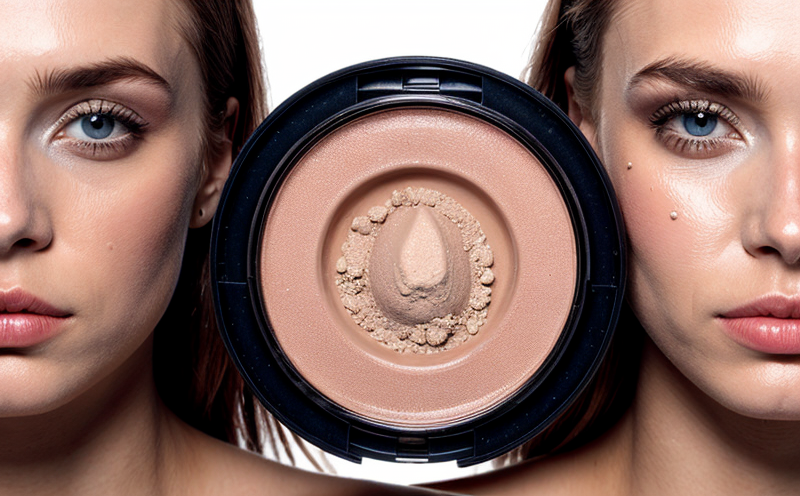Mercury Contamination Testing in Skin Whitening Creams
Mercury contamination testing is a critical component of cosmetic product safety and regulatory compliance. Skin whitening creams, in particular, are often targets for mercury contamination due to the potential misuse or unauthorized addition of mercury compounds as an ingredient. This can lead to severe health risks including neurological damage, kidney disease, and skin irritation.
Our service offers comprehensive testing to ensure that skin whitening creams meet stringent safety standards and comply with international regulations. We use advanced analytical techniques such as Inductively Coupled Plasma-Mass Spectrometry (ICP-MS) for precise detection of mercury levels in cosmetics. This method provides high sensitivity and accuracy, making it ideal for the trace amounts typically found in contaminated products.
The testing process begins with thorough sample preparation. Samples are homogenized to ensure consistent distribution of contaminants throughout the sample matrix. After preparation, the samples undergo ICP-MS analysis to detect mercury content. Our lab adheres strictly to ISO 17025 and ASTM E834 standards for quality assurance.
The importance of this testing cannot be overstated. Regulatory bodies like the European Union, United States Food and Drug Administration (FDA), and others have strict limits on mercury in cosmetics. For instance, the EU’s Regulation (EC) No 1223/2009 sets a maximum limit for total mercury content to not exceed 1 part per million (ppm). Ensuring compliance with these regulations is crucial for brand reputation and consumer trust.
In addition to regulatory compliance, our testing helps brands protect their products from contamination. Unauthorized additives can result in significant financial losses due to product recalls or market withdrawals. By detecting mercury early in the development process, companies can address issues promptly and avoid such costly incidents.
Our team of experts is dedicated to providing accurate, reliable results that meet the highest standards. We offer detailed reports with clear recommendations on how to proceed if contamination is detected. This service is vital for maintaining product safety and ensuring compliance with international regulations.
Applied Standards
| Standard | Description |
|---|---|
| ISO 17025:2017 | This international standard sets requirements for the competence of testing and calibration laboratories. It ensures that our laboratory meets high-quality standards in operations, management systems, and technical capabilities. |
| ASTM E834-19 | This American Society for Testing and Materials standard provides guidelines for the sampling, preparation, and analysis of materials used in the chemical industry. It is particularly relevant to our testing methods as it ensures that sample handling and analysis are conducted accurately. |
| European Union Regulation (EC) No 1223/2009 on Cosmetics | This regulation sets out specific requirements for cosmetics, including strict limits on the presence of harmful substances such as mercury. Compliance with this regulation is essential to ensure that our testing meets all legal and safety standards. |
Customer Impact and Satisfaction
We pride ourselves on delivering exceptional customer service, ensuring that every client receives personalized attention and support. Our team of experienced professionals is dedicated to providing accurate, reliable results and clear recommendations for any detected contamination.
The impact of our testing extends beyond regulatory compliance; it also contributes to brand reputation and consumer trust. By detecting mercury early in the development process, companies can address issues promptly and avoid costly product recalls or market withdrawals. This proactive approach not only protects consumers but also strengthens brand loyalty and enhances overall customer satisfaction.
Our clients appreciate our commitment to quality and accuracy. We offer detailed reports with clear recommendations on how to proceed if contamination is detected, ensuring that brands have the information they need to take corrective action promptly. Our goal is to provide peace of mind for both manufacturers and consumers by ensuring product safety and compliance with international regulations.
We strive to maintain high levels of customer satisfaction through our reliable testing services. Our team works closely with clients throughout the testing process, providing timely updates and support. We also offer follow-up consultations to help brands understand their results and implement necessary changes.
International Acceptance and Recognition
- The European Union’s Regulation (EC) No 1223/2009 on Cosmetics, which sets strict limits on the presence of harmful substances such as mercury.
- United States Food and Drug Administration (FDA) regulations governing cosmetic safety and labeling.
- International Organization for Standardization (ISO) standards ensuring laboratory competence and quality.
- American Society for Testing and Materials (ASTM) guidelines for sampling, preparation, and analysis of materials used in the chemical industry.
Our testing methods are recognized internationally, ensuring that our results are accepted by regulatory bodies worldwide. This recognition adds to the reliability and credibility of our services, providing peace of mind for both manufacturers and consumers.





